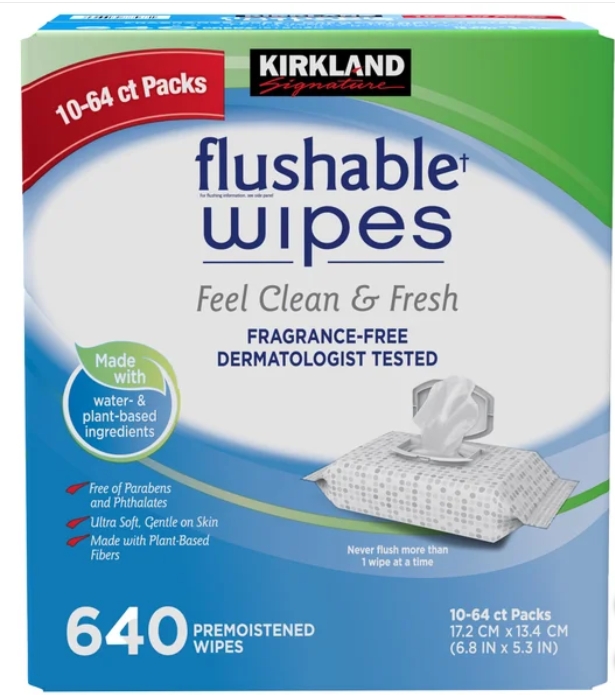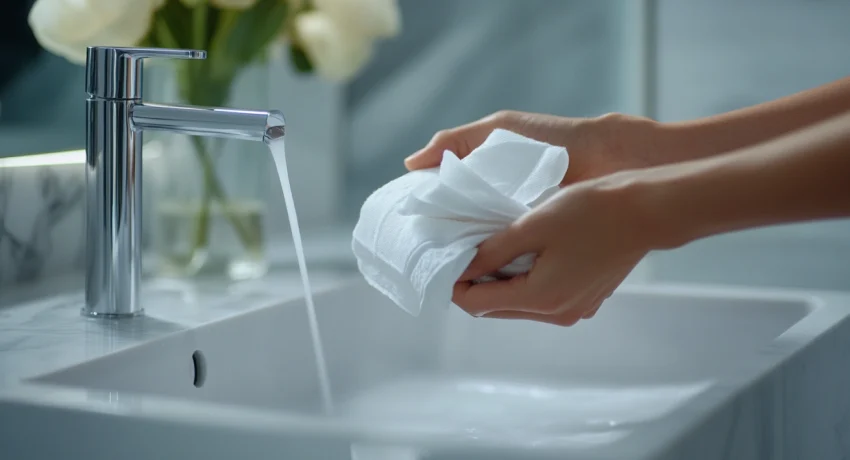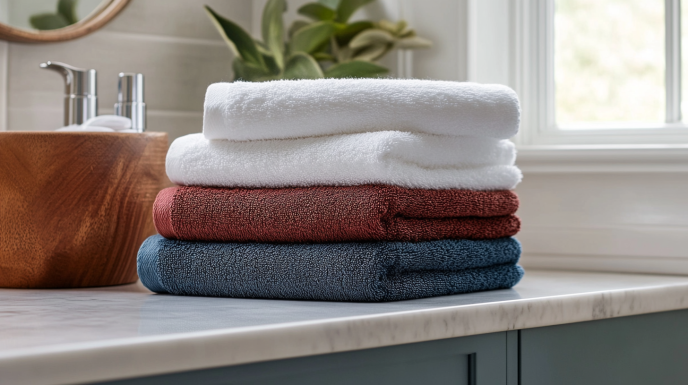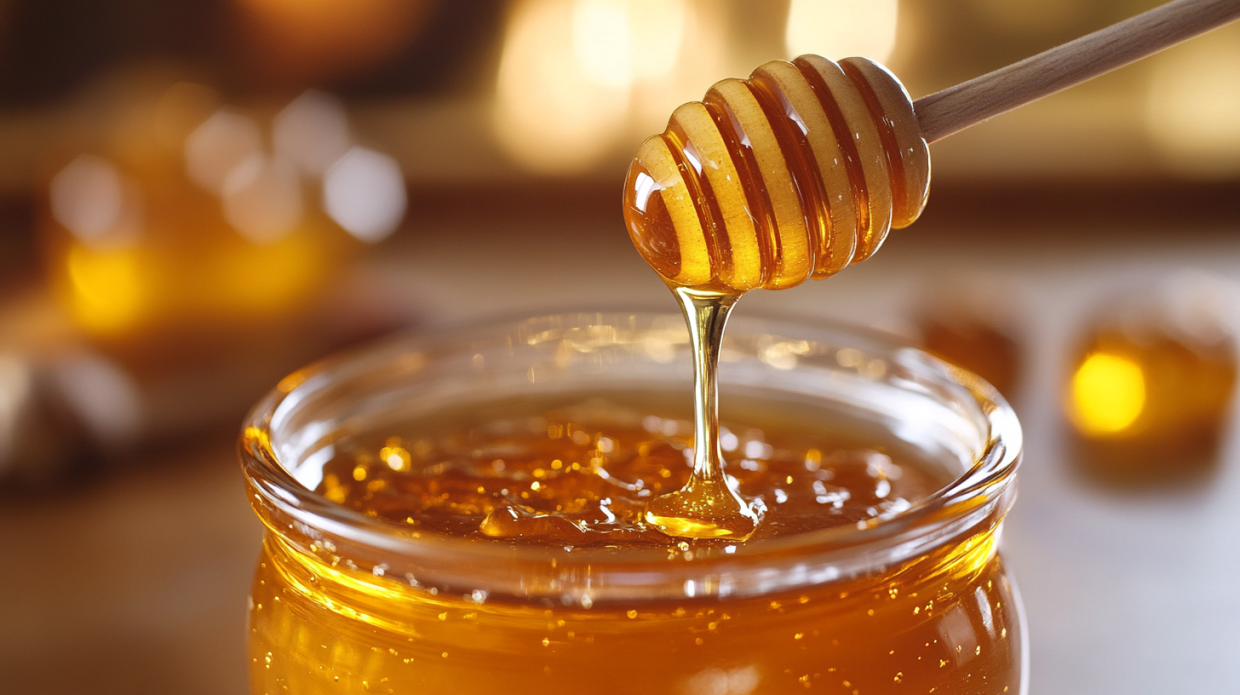
Kirkland Signature Premoistened Flushable Wipes, Fragrance Free, 640-count
- Ultra Soft and Gentle on Skin
- Formulated with Vitamin E and Aloe
- Fragrance-free and Dermatologist Tested
- Snap-shut Lid with Easy, Pop-up Dispensing
Navigating the Murky Waters of Bathroom Hygiene in the Modern Age
In a world where comfort and convenience reign supreme, flushable wipes have revolutionized our bathroom experience. Gone are the days when dry toilet paper was our only option. Today, we’re exploring one of the most popular choices on the market: Kirkland Flushable Wipes. Whether you’re a loyal Costco member or simply curious about these seemingly magical squares of moisture, this comprehensive guide will answer every question you didn’t even know you had.
The Flushability Factor: Marketing Promise vs. Plumbing Reality
Let’s address the elephant in the bathroom: Are Kirkland Flushable Wipes really flushable? The package boldly claims they are, but plumbers nationwide might beg to differ.
The term “flushable” simply means the product will disappear down your toilet when flushed. However, the real question is what happens after that magical swirl. Unlike toilet paper, which is designed to disintegrate rapidly in water, flushable wipes—including Kirkland’s version—take considerably longer to break down.
In my own home experiment (yes, I’m that dedicated to investigative bathroom journalism), I placed a Kirkland wipe in a jar of water and shook it vigorously for several minutes. While it did begin to lose some integrity, it remained largely intact. Traditional toilet paper, by comparison, dissolved into an unrecognizable pulp within seconds.
This doesn’t mean Kirkland is being dishonest. Their wipes do eventually break down, but the timeline is the critical factor here. Your pipes don’t have the luxury of waiting days or weeks for decomposition. The real-world flushability of these wipes depends greatly on your specific plumbing system, its age, and condition.
The Material Matters: What Are These Magical Cloths Made Of?
Kirkland Flushable Wipes are primarily composed of cellulosic fibers derived from wood pulp, similar to toilet paper but processed differently to maintain wet strength. They also contain water, mild cleansers, moisturizing agents like aloe vera and vitamin E, and preservatives to prevent bacterial growth in that moist environment.
What they don’t contain is equally important. Kirkland wipes are:
- Alcohol-free, preventing the drying effect many cleansing products have
- Free of harsh chemicals that might irritate sensitive areas
- Made without plastic fibers that never biodegrade (unlike some competing brands)
The material composition makes them soft enough for comfort but supposedly sturdy enough to use effectively without tearing—a delicate balance that Kirkland seems to have mastered according to thousands of satisfied customers.
The Costco Connection: Availability and Pricing
As a Kirkland Signature product, these wipes are primarily available at Costco warehouses and through Costco’s online platform. This exclusivity is both a blessing and a curse—while it limits where you can purchase them, it also means consistent quality control and Costco’s famous customer satisfaction guarantee.
The pricing is where Costco’s bulk model truly shines. At approximately $14.99 for a package containing 632 wipes (prices may vary by location and over time), you’re looking at roughly 2.4 cents per wipe. Compare this to leading brands like Cottonelle, which often cost around 5-7 cents per wipe, and the savings become apparent.
During my last Costco run, I noticed they were prominently displayed in the paper products aisle, often with a limit of two packages per customer during high-demand periods (like the Great Toilet Paper Panic of 2020, which none of us will soon forget).
Septic System Compatibility: A Delicate Ecosystem
For the approximately 20% of American homes using septic systems, the question of compatibility is crucial. Kirkland claims their flushable wipes are septic-safe, but this requires some nuance.
Septic systems rely on bacterial action to break down waste. Anything that disrupts this bacterial balance or doesn’t decompose quickly enough can cause significant issues. While Kirkland wipes don’t contain antibacterial agents that would kill beneficial bacteria, their slower decomposition rate still poses potential challenges.
If you have a septic system, the safest approach is to dispose of all wipes—even those labeled flushable—in the trash rather than the toilet. This might seem inconvenient, but it’s considerably less inconvenient than a septic system failure, which can cost thousands to repair.
The Dissolution Dilemma: Do They Really Break Down?
This brings us to the core scientific question: the decomposition rate. In ideal laboratory conditions, Kirkland Flushable Wipes will eventually break down in water. However, real-world plumbing systems don’t provide ideal conditions.
Factors affecting breakdown include:
- Water temperature (colder water slows decomposition)
- Water movement (stagnant areas in pipes provide little agitation)
- Pipe condition (rough spots can catch wipes before they decompose)
- Distance to treatment facility (shorter distances give less time for breakdown)
Municipal water treatment workers have reported “fatbergs”—massive clogs composed of wipes and congealed fats—requiring expensive removal procedures. While these aren’t exclusively caused by Kirkland wipes, the flushable wipes category as a whole contributes significantly to these issues.
In fairness, Kirkland’s wipes do appear to break down more effectively than some competitors, but they still don’t match the rapid dissolution of toilet paper.
Quantity and Value: The Bulk Buying Equation
Each standard package of Kirkland Flushable Wipes contains 632 wipes, divided into five individually wrapped packs of approximately 126 wipes each. This packaging design helps maintain moisture in the opened pack while keeping the others fresh until needed.
For the average household of four, a package might last 2-3 months with regular but not excessive use. This longevity, combined with the competitive price point, represents significant value—especially for families transitioning from expensive baby wipes to adult flushable wipes.
The individual wrapping also makes them somewhat portable, though they don’t come in specialized travel packs. Many customers report repurposing the smaller packs for travel by placing them in zip-top bags to maintain moisture.
Environmental Considerations: Biodegradability and Sustainability
Are Kirkland Flushable Wipes biodegradable? Yes, but with caveats. The cellulosic fibers will eventually biodegrade in proper conditions, but “eventually” is the operative word. In landfill conditions, where oxygen is limited, this process takes significantly longer than in composting environments.
From an environmental perspective, the most responsible approach is to use toilet paper for routine needs and reserve wipes for situations where additional cleaning is necessary. This balanced approach reduces environmental impact while maintaining hygiene standards.
Kirkland’s packaging is primarily plastic, which presents additional environmental considerations. While technically recyclable, many recycling programs don’t accept this type of plastic film, meaning it often ends up in landfills despite good intentions.
Skin Sensitivity and Hypoallergenic Properties
For those with sensitive skin, bathroom hygiene products can be a minefield of potential irritants. Kirkland Flushable Wipes are marketed as hypoallergenic, and most users with sensitivity issues report positive experiences.
The wipes are free of harsh chemicals and contain soothing ingredients like aloe vera and vitamin E. However, they do contain a mild fragrance, which could potentially trigger reactions in extremely sensitive individuals or those with specific fragrance allergies.
The moisture level is carefully calibrated to clean effectively without leaving excessive wetness behind—an important factor for preventing skin irritation. The pH balance also appears to be skin-friendly, though Kirkland doesn’t specifically advertise this aspect.
The Fragrance Factor: Subtle or Overpowering?
Speaking of fragrance, Kirkland Flushable Wipes do contain a light scent that most users describe as “clean” and “fresh” without being overpowering. Unlike some competing products that seem determined to make your bathroom smell like a tropical paradise, the Kirkland approach is more subtle.
For those sensitive to fragrances, this could be either good news or bad news. The subtlety means less potential for irritation, but the presence of any fragrance at all might be problematic for those with severe sensitivities.
In my personal experience, the scent dissipates quickly after use and doesn’t linger on skin, which seems like a thoughtful design choice for a product in this category.
Brand Battle: Kirkland vs. Cottonelle
How do Kirkland wipes compare to industry leader Cottonelle? Having tested both extensively (the sacrifices I make for thorough research!), I can report several key differences:
Texture: Cottonelle wipes feature a distinctive “ridged” pattern that provides slightly more cleaning power, while Kirkland offers a smoother texture that some find gentler.
Moisture level: Kirkland wipes tend to be slightly less wet than Cottonelle, which means less residual moisture but potentially less effective cleaning for stubborn situations.
Size: Cottonelle wipes are marginally larger, providing more surface area per wipe.
Thickness: Kirkland wipes are comparable in thickness to Cottonelle, offering similar tear resistance during use.
Value: This is where Kirkland clearly pulls ahead, offering savings of 50% or more per wipe compared to Cottonelle.
Breakdown rate: In my unscientific bathroom testing, Cottonelle appeared to begin breaking down slightly faster than Kirkland, though neither approached the dissolution rate of standard toilet paper.
Beyond the Bathroom: Alternative Uses
While primarily designed for bathroom use, Kirkland Flushable Wipes have developed a cult following for other applications. Users report employing them for:
- Removing makeup (though dedicated makeup remover wipes might be more effective)
- Quick refreshment during hot weather or after workouts
- Cleaning small spills on clothing
- Wiping down grocery cart handles and other potentially germy surfaces
- General hand cleaning when soap and water aren’t available
The alcohol-free formulation makes them gentle enough for most external body surfaces, though I wouldn’t recommend them for facial use on acne-prone skin due to the fragrances and preservatives.
The Baby Question: Adult Wipes for Infant Use?
Can Kirkland Flushable Wipes be used on babies? Technically yes, but it’s not ideal. While they don’t contain alcohol or harsh chemicals, they aren’t specifically formulated for the extremely sensitive skin of infants.
Dedicated baby wipes typically contain different moisturizing agents optimized for preventing diaper rash and protecting delicate skin. They’re also usually subjected to additional testing for safety with infants.
If you’re in a pinch, Kirkland Flushable Wipes won’t likely cause harm for a diaper change or two, but for regular use, stick with products specifically designed for babies.
The Plumbing Question: To Flush or Not to Flush?
We’ve touched on this earlier, but it bears repeating: despite the “flushable” label, the safest choice for your plumbing system is to dispose of all wipes in the trash. This is especially true for older homes, homes with known plumbing issues, septic systems, or areas with aging municipal sewer infrastructure.
The inconvenience of a small bathroom trash can is nothing compared to the nightmare of a major plumbing backup. Many plumbers report that wipes—regardless of brand or flushable claims—are among the most common causes of serious clogs they encounter.
If you absolutely must flush, limit it to one wipe at a time, and never flush multiple wipes in a single flush. This at least reduces the likelihood of immediate clogging.
The Voice of Experience: Customer Reviews
Customer reviews of Kirkland Flushable Wipes are overwhelmingly positive, with most users praising their comfort, effectiveness, and value. On Costco’s website, they consistently maintain a 4.7/5 star rating from thousands of reviews.
Common praise points include:
- Gentle cleaning action that leaves users feeling fresher than toilet paper alone
- Convenient packaging that maintains moisture effectively
- Excellent value compared to other brands
- Appropriate wetness level—not too dry or too soggy
The most frequent criticisms center around:
- Occasional quality control issues with package sealing
- Concerns about actual flushability despite package claims
- The lack of unscented options for those with fragrance sensitivities
Environmental Impact: The Bigger Picture
When considering the environmental impact of Kirkland Flushable Wipes, we need to look beyond just biodegradability. The production process for wipes uses significantly more resources than toilet paper, including water for the wet formulation and energy for the more complex manufacturing process.
The individual packaging, while practical for maintaining moisture, creates additional plastic waste. Transportation costs are also higher due to the weight of the moisture content.
For environmentally conscious consumers, the best approach is moderation. Using wipes as a supplement to toilet paper rather than a replacement significantly reduces the environmental footprint while still providing the benefits of improved cleanliness when needed.
Longevity and Storage: Maximizing Your Investment
How long does a pack of Kirkland Flushable Wipes last? Beyond the simple math of wipes per package divided by usage frequency, there’s the question of shelf life.
Unopened packages maintain their moisture and effectiveness for approximately 18 months from production. Once a small pack is opened, it should ideally be used within 30-45 days to prevent drying out or potential bacterial growth, despite the preservatives.
To maximize longevity:
- Store unopened packages in a cool, dry place
- Keep opened packs tightly sealed
- Consider transferring wipes to a hard-sided container with a good seal if the original packaging becomes damaged
- Don’t stockpile excessive quantities beyond what you’ll use within a year
The Antibacterial Question: Cleaning vs. Sanitizing
Kirkland Flushable Wipes are not antibacterial. This is actually a good thing for several reasons. First, routine use of antibacterial products can contribute to the development of resistant bacteria. Second, antibacterial ingredients tend to be harsher on skin and the environment.
These wipes are designed for mechanical cleaning—physically removing matter rather than killing bacteria. For most bathroom uses, this physical removal is sufficient for proper hygiene.
If you’re seeking antibacterial properties for specific situations (like during illness), you’d be better served by a dedicated antibacterial product rather than expecting your flushable wipes to serve this purpose.
Portability and Travel Considerations
While Kirkland doesn’t offer specially designed travel packs, the individual wrapped packs of approximately 126 wipes can be repurposed for travel. Each small pack is about the size of a paperback book, making them somewhat bulky for a purse or small bag.
Many frequent travelers report dividing the contents of one pack into smaller resealable bags for more convenient transport. Others transfer a small quantity to wet wipe travel containers designed for baby wipes.
For international travel, remember that customs officials in some countries may have questions about unmarked moist wipes, so keeping them in their original packaging or a clearly marked container can prevent confusion.
Final Thoughts: Are Kirkland Flushable Wipes Worth It?
After this deep dive into the world of Kirkland Flushable Wipes, the verdict is nuanced. They offer excellent value, reasonable quality, and improved cleanliness compared to toilet paper alone. However, the environmental and plumbing concerns cannot be dismissed.
The most responsible approach is to use them judiciously, dispose of them in the trash rather than the toilet whenever possible, and view them as a supplement to rather than replacement for traditional toilet paper.
For Costco members already making regular warehouse runs, the convenience and value make them worth considering. The individual packaging maintains freshness effectively, and the formulation strikes a good balance between cleaning power and gentleness.
The ultimate question isn’t whether Kirkland Flushable Wipes are good—they clearly deliver on their core promises. The question is whether the benefits outweigh the potential downsides for your specific situation, plumbing system, and environmental values.
As with many modern conveniences, the answer likely lies in moderation and mindfulness rather than wholesale adoption or rejection. Used thoughtfully, these wipes can enhance your bathroom experience without undue risk to your plumbing or the environment.
And isn’t that what we’re all looking for? A little more comfort in our daily routines, without creating problems for ourselves or the world around us. In that balanced approach, Kirkland Flushable Wipes have certainly earned their place in the bathroom cabinet—even if not necessarily in the toilet itself.




